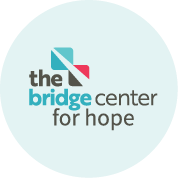About Substance Abuse
What Is a Substance Use Disorder
According to SAMSHA substance use disorders occur when the recurrent use of alcohol and/or drugs causes clinically significant impairment, including health problems, disability, and failure to meet major responsibilities at work, school, or home.
Substance use disorders impact people from all walks of life. These illnesses are common. An estimated 95,000 people die from alcohol-related causes annually, and 19.7 million Americans aged 12 and older battled a substance use disorder in 2017.
They often co-occur with mental health conditions. People with mental illness are more likely to experience a substance use disorder than those not affected by a mental illness. In fact, about a third of all people experiencing mental illnesses and about half of people living with severe mental illnesses also experience substance abuse.
But integrating both screening and treatment for mental and substance use disorders can lead to a better quality of care and health outcomes for those living with co-occurring disorders. That's why treating both conditions is so critical to recovery.

It can be difficult for an individual to recognize when substance use has become a disorder. Knowing the symptoms of a substance use disorder can help. Drug or alcohol addiction symptoms or behaviors can include:
Feeling that you have to use the substance regularly — daily or even several times a day.
Having intense urges for the substance that block out any other thoughts.
Over time, needing more of the substance to get the same effect.
Taking larger amounts of the substance over a longer period of time than you intended.
Making certain that you maintain a supply of the substance.
Spending money on the substance, even though you can't afford it.
Not meeting obligations and work responsibilities, or cutting back on social or recreational activities because of substance use.
Continuing to use the substance, even though you know it's causing problems in your life or causing you physical or psychological harm.
Doing things to get the substance that you normally wouldn't do, such as stealing.
Driving or doing other risky activities when you're under the influence of the substance.
Spending a good deal of time getting the substance, using the substance or recovering from the effects of the substance.
Failing in your attempts to stop using the substance.
Experiencing withdrawal symptoms when you attempt to stop taking the substance.
Treatment options for substance use disorders take many different forms and vary in intensity of the intervention. The goal of all treatment models, though, is to manage the symptoms and guide the patient in learning to manage the disorder as a chronic condition.
Treatment services should meet the specific needs of the individual and not employ a “one-size-fits-all” approach to recovery.
Specialized treatment in a facility designed to treat addiction and substance use disorders is recommended. Treatment can include medication to help control symptoms and behavioral interventions delivered in individual, group and family settings.
Treatment for a substance use disorder occurs along a continuum. For emergent substance use crises, a crisis intervention facility that specializes in treating substance use disorders such as the Bridge Center is recommended as a first step toward recovery.
Long-term treatment options include residential treatment and step-down services, including intensive outpatient or other outpatient counseling and recovery support services to promote and encourage patients to independently manage their condition.



